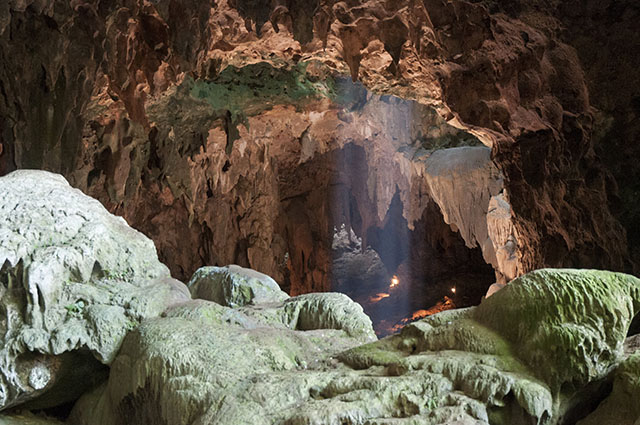Filipinos are elated at the discovery of a new human species in Callao Cave, Cagayan province which puts the country in a spotlight at the archaeological map where the earliest humans evolved.
Researchers discovered thirteen fossil bones and teeth in the cave which possessed a mix of ancient and modern human features.
They dubbed this species as Homo luzonensis, named after the island of Luzon where it was found.
It is estimated to be at 50,000 to 67,000-years-old and has similar features with Homo sapiens, the earliest modern humans, and the Australopithecus, the first species to walk upright.
The Homo luzonensis were small-bodied and were estimated to be four feet tall. They were also perceived to be a climber of trees due to their curved fingers and toes, as evidenced through their bones.

The Homo luzonensis lived in the same time period as the Homo sapiens, Homo floresiensis, Neanderthals, and Denisovans.
It was only the Homo sapiens, however, who survived and eventually evolved into modern human beings.
The discovery of Homo luzonensis was the responsibility of Filipino archaeologist Armand Salvador Mijares and his team of multinational researchers.
RELATED: ‘Man who dug deeper’: UP professor leads discovery of ‘Homo luzonensis’
Their breakthrough has prompted Filipinos to share their elation over the country’s now significant role in the history of human evolution.
Today is a remarkable day for #science! A visual evidence of an immense black hole that can easily gobble up the solar system and a discovery new hominid species, Homo luzonensis, which puts the Philippines in the archeological map where prehistoric men roamed. pic.twitter.com/Z649HHspFg
— Wilhelm G. (@guillergrey) April 10, 2019
"Homo luzonensis fossils found in Luzon island cave, dating back up to 67,00 years." That's our island! 🙂
New species of ancient human discovered in Philippines cave https://t.co/drotFKhAK7
— 𝐌 𝐀 𝐏 𝐌 𝐀 𝐊 𝐄 𝐑 (@mapmakerdavid) April 10, 2019
Philippines in human evolution
The Philippines didn’t really have a huge part in the archeological map indicating where the earliest humans roamed the earth. As far as experts were concerned, species like the Homo erectus ventured into Indonesia.
To go further east would be impossible, they say, since ocean currents would make it impassable for them.
“Luzon seemed especially difficult for ancient hominins to reach, as it had never been connected to the mainland by land bridges, so archaeologists thought that digging into deeper, older layers of soil wouldn’t yield much,” National Geographic reported.
That time, the Philippines was unreachable and land bridges never connected Luzon to mainland Asia, according to paleoanthropologist John Hawks of the University of Wisconsin-Madison.
The surrounding water made it difficult to access the island which they believed limited species migration.
“Some anthropologists have thought that the colonization of such islands over water was due to luck. Maybe ancient storms or tsunamis washed a few unsuspecting survivors onto ancient beaches,” Hawks shared.
Michael Petraglia, a paleoanthropologist at the Max Planck Institute for the Science of Human History, presumed that Homo luzonensis might have built rafts to reach the Philippines.
“If rhinos can swim and get to places, certainly we can think of erectus, floresiensis, and luzonensis not necessarily just swimming but at least rafting, if not boating. It’s just pure speculation, but you could posit that and make some convincing arguments,” he shared. — Featured video by Uela Altar-Badayos








